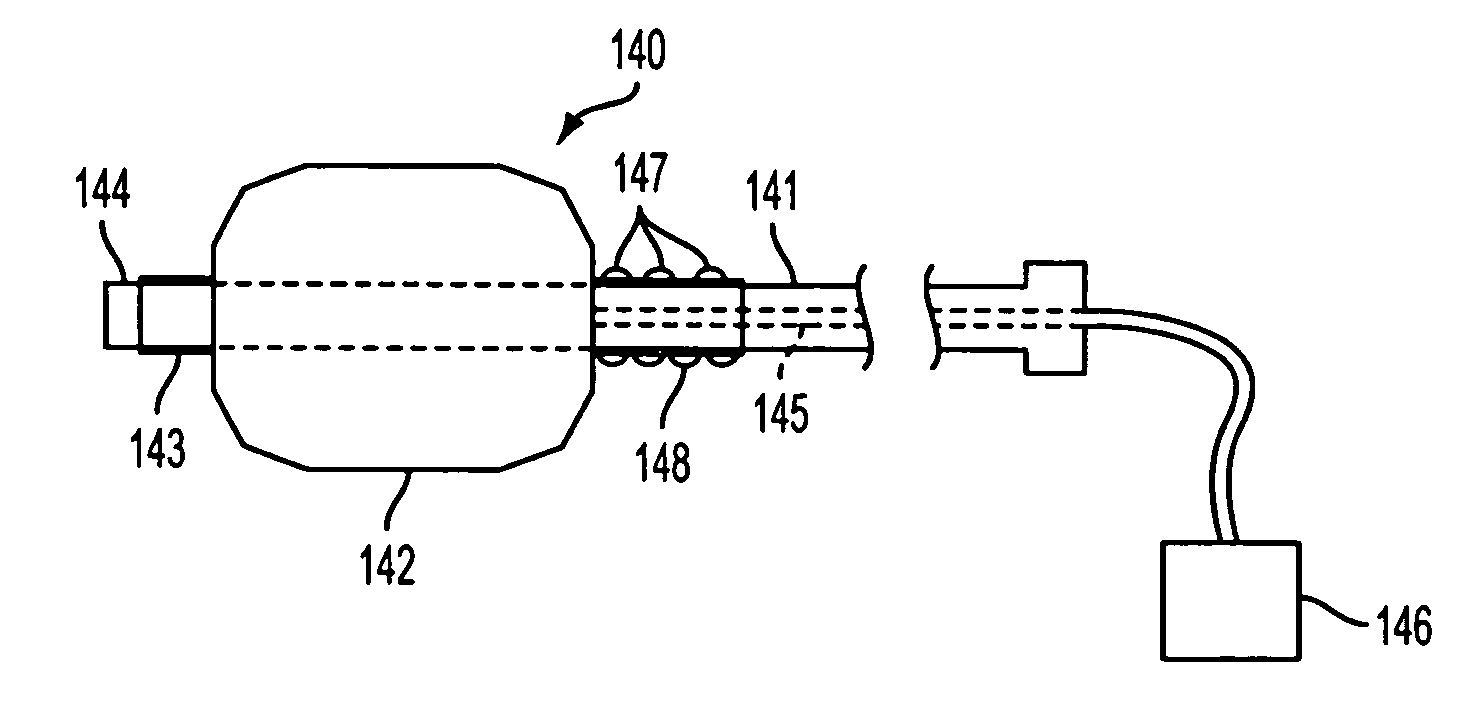Delivery catheter for ribbon-type prosthesis and methods of use
a ribbon-type prosthesis and catheter technology, applied in the field of catheter delivery, can solve the problems of large delivery profile, unsuitable stents for use in smaller vessels, and poor placement effect, and achieve the effect of reducing the complexity of the procedur
- Summary
- Abstract
- Description
- Claims
- Application Information
AI Technical Summary
Benefits of technology
Problems solved by technology
Method used
Image
Examples
Embodiment Construction
[0033]The present invention is directed to a delivery catheter for use with an implantable vascular prosthesis configured for use in a wide range of applications, such as treating aneurysms, maintaining patency in a vessel, and allowing for the controlled delivery of therapeutic agents to a vessel wall. The delivery catheter of the present invention is designed for use in delivering a vascular prosthesis having a helical ribbon portion joined, at its distal end, to a radially self-expanding anchor portion. The delivery catheter provides enhanced accuracy in delivering the stent by reducing the risk of bunching of the stent and inadvertent axial movement of the delivery catheter during stent deployment. In addition, the delivery catheter may optionally include an angioplasty balloon to perform angioplasty, thus reducing the number of equipment exchanges required to perform an interventional procedure.
[0034]Referring to FIGS. 1A and 1B, a first embodiment of a vascular prosthesis suit...
PUM
 Login to View More
Login to View More Abstract
Description
Claims
Application Information
 Login to View More
Login to View More - R&D
- Intellectual Property
- Life Sciences
- Materials
- Tech Scout
- Unparalleled Data Quality
- Higher Quality Content
- 60% Fewer Hallucinations
Browse by: Latest US Patents, China's latest patents, Technical Efficacy Thesaurus, Application Domain, Technology Topic, Popular Technical Reports.
© 2025 PatSnap. All rights reserved.Legal|Privacy policy|Modern Slavery Act Transparency Statement|Sitemap|About US| Contact US: help@patsnap.com



